With 3 seconds left in a high-stakes winner-take-all playoff game, Michael Jordan elevated and hit a foul-line jumper to propel his Chicago Bulls into the second round of the 1989 NBA playoffs. That moment features one of the most memorable field goals in basketball of all time. But what exactly are field goals, and why are they valued in the game? Let’s break it down:
Key Takeaways:
- A field goal in basketball refers to any basket made during regular play, excluding free throws.
- There are two main types of field goals – two-pointers and three-pointers.
- Field goals are how teams get most of their points in a game.
Whether it’s a layup or half-court three-pointer, the basketball field goal is the core of every team’s offensive strategy. In this article, we define field goals in basketball, explain the different types of field goals, and discuss how field goals shape a player’s offensive impact and the game’s outcome.
Definition and Basics of a Field Goal
A field goal in basketball happens when a player scores by getting the ball into the basket during the game. Here’s what you need to know:
- What Counts as a Field Goal: Any time a player shoots the ball into the hoop from anywhere on the court during play, it counts as a field goal. It’s the main way teams score points.
- Two Types of Field Goals: There are two-point and three-point field goals. A two-pointer is when a player shoots from inside the three-point line. A three-pointer is from outside this line.
- Not Free Throws: Field goals are different from free throws. Free throws are given after certain fouls and are worth one point each. They are taken from the free-throw line, with no defense trying to prevent or block the shot.

You’ll hear many references to field goals when you watch a basketball game. They are a big part of each team’s offensive strategy and deliver much of the excitement of the game. When you hear ‘field goal basketball,’ it’s all about these baskets that players make to add to their team’s point total to improve the likelihood of a win.
Learn more: What is PPG in basketball?
Types of Field Goals
Field goals in basketball happen in two ways, each with a different point value. Let’s look at the two types of field goals:
Two-Point Field Goals
A two-point field goal is the most common way to score in basketball. This happens when a player shoots the ball into the hoop from anywhere inside the three-point line.
Keep your eyes on the big arc drawn on each side of the court – if the player is inside this arc when they shoot, and they score, it counts for two points.
Examples of two-point field goals include:
- Layups (where a player runs up and lays the ball into the hoop).
- Dunks (where a player jumps and forcefully slams the ball through the hoop).
- Jump shots (where a player jumps and shoots the ball while in mid-air) taken from inside the three-point line.
Three-Point Field Goals
A three-point field goal is scored when a player shoots the ball into the hoop from outside the three-point line. Because this line is further away from the hoop, making these shots more challenging, three-point field goals are rewarded with three points.
Examples of three-pointers include:
- A conventional three-point shot made by a player whose feet are just behind the three-point line.
- Half-court heaves before the buzzer made by players like Stephen Curry, from well behind the three-point line.

Learn more: Who has the most rings in the NBA?
Special Cases in Different Basketball Leagues (FIBA, Big3)
Different basketball leagues may have their twists on field goals.
For instance, in FIBA (International Basketball Federation) games, the three-point line is slightly closer to the hoop than in the NBA, changing the dynamics of three-point shooting.
In the Big3 3-on-3 basketball league, there’s an even more unique twist: they are the only league to have a four-point circle. Shots from this circle, further away from the hoop, are worth four points. These four-point field goals add a whole new strategy to the game.
Historical Perspective and Evolution of Field Goals
The term’ field goal’ doesn’t seem to reflect the basketball game played on a court.
The term comes from the game’s early days and likely originates from basketball inventor James Naismith’s original 13 rules. In those rules, he refers to “goals” and “field of play.”
Also, while Naismith invented basketball to be played on indoor courts, he described that the game could be played on “any kind of ground – in a gymnasium, a large room, a small lot, a large field, whether these had uneven or smooth surfaces.”
Some temporarily brought the game to outdoor grass fields, like football and soccer. Some believe the field goal term stemmed from this period.
The term field goal was meant to distinguish the types of scores from the field of play, made during regular clock play, from goals scored in other ways, like free throws.
Over time, even as basketball moved back indoors and evolved, the term’ field goal’ stuck and is now synonymous with scoring during regular play.
Introduction of the Three-Point Field Goal
The three-point line wasn’t introduced until 1967 by the American Basketball Association (ABA), which later merged with the NBA. So before then, every field goal counted from the same number of points regardless of where somebody shot it.
As you can imagine, the new three-point line drastically changed the game. It led to more specialized shooting skills by individual players and uprooted team tactics to put more emphasis on the new scoring opportunity.
It also opened the door for shorter basketball players. By expanding the offensive side of the court, the smaller stature players have more spacing to get shots off and don’t always have to battle under the basket with players much bigger than them.
Learn more: Who are the shortest NBA players and the shortest WNBA players?
Statistical Importance of Field Goals
Field goal statistics are widely valued and referenced in basketball, because they help analyze a player’s and team’s offensive efficiency. These stats tell us how many points a player or team scores and how effective they are at shooting.

Field Goals Made (FGM)
Field Goals Made, often abbreviated to FGM, refers to the number of successful field goal shots a player or team makes in a game.
For instance:
- If a player shoots and scores from inside the three-point line ten times in a game, their FGM for that game is 10.
- If a player shoots and scores from inside the three-point line two times, and outside the three-point line two times, their FGM for that game is 4.
FGM is a straightforward stat that shows a player’s or team’s scoring ability; how many times did they put the ball in the basket during play.
Field Goals Attempted (FGA)
Field Goals Attempted, or FGA, is the total number of field goal shots a player or team tries to make, regardless of whether they score.
For example:
- If a player tries 15 shots in a game, whether they score them or not, their FGA is 15.
This stat helps understand how many opportunities or how active a player or team is in attempting to score.
Field Goal Percentage (FG%)
Field Goal Percentage, or FG%, combines Field Goals Made and Field Goals Attempted to show a player’s or team’s efficiency in making field goals.
FG% is calculated by dividing the number of field goals made (FGM) by the number of field goals attempted (FGA), then multiplying by 100 to get a percentage.
For example:
- If a player makes 5 out of 10 shots, their FG% is (5/10) * 100 = 50%.
- If a team makes 35 out of 80 shots in a game, the team’s FG% is (35/80) * 100 = 43.7%
A higher FG% indicates greater shooting efficiency.
Learn more: What are 3 and D players?
Scoring and Strategies Involving Field Goals
Field goals are central to a team’s strategy and player. Every offensive scheme or set is designed to get a player in position to hit a field goal. And on the defensive end, the goal is to make scoring field goals as difficult as possible.
Any player can heave up a prayer three, but taking bad shots leads to a lower field goal percentage. Players who understand their offensive strengths and make fast decisions are often more efficient from the floor.
Role in Team Strategy
Maximizing field goal efficiency lies in taking smart shots and creating scoring opportunities. Teams work on strategies like ball movement and creating space to open up areas for players to take good, high-percentage shots.
What these high-percentage shots look like varies by team, and the strategy often depends on the players’ strengths.
Some teams focus on getting close to the basket for higher-percentage two-point shots. This could look like guards driving to the basket for layups or assists to open teammates. It may be getting the ball to a dominating post player on the block.
Other teams may have more skilled shooters and craft their offensive strategy around opening up shooters around the three-point line.
Field Goal Violations and Rules
There are a couple of rules and violations related to basketball field goals that you’ll want to know: goaltending and basket interference.
Goaltending
Goaltending in basketball happens when a defensive player illegally blocks a field goal attempt on a downward trajectory toward the basket. Blocking a shot isn’t allowed once the ball is on its way down or has already hit the backboard.
When goaltending is called, the field goal is considered successful. The shooting team is awarded the points (it could be two or three, depending on whether it was a two-point or three-point field goal attempt).
Basket Interference
Basket interference is when a player illegally interferes with the ball or the basket in a way that affects the field goal attempt.
It can be called on an offensive player if they touch the ball while it’s on or within the basket’s rim. In this case, the field goal doesn’t count if it went in and the defense is awarded possession of the ball.
Defensively, it’s similar to goaltending but can also include touching the ball in the rim or grabbing the basket during a shot. In this case, the offensive team is awarded the points.
Note: Cherry picking in basketball is not illegal. There are no rules against trying it to score field goals.
FAQs about Field Goals in Basketball
Why is it called a field goal in basketball?
The term ‘field goal’ originated from basketball inventor James Naismith’s use of “goals” and “field of play” when describing the game for the first time. The name stayed, even though basketball is played on courts.
What is considered a field goal in basketball?
A field goal in basketball is any basket scored during play. It includes shots made anywhere on the court but excludes free throws.
What does FG mean in basketball?
‘FG’ stands for ‘Field Goal’ in basketball. It refers to baskets scored during play. FG is often used in stats to talk about shooting, like FG% (Field Goal Percentage), which measures a player’s or team’s offensive accuracy.
Is a 3-pointer a Field Goal?
Yes, a 3-pointer is a type of field goal in basketball. It’s a shot made from outside the three-point line and counts for three points. It’s one of the two main types of field goals, the other being the two-pointer, which is scored from inside the three-point line.

